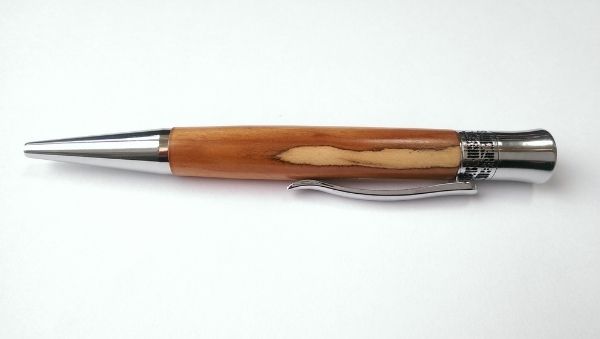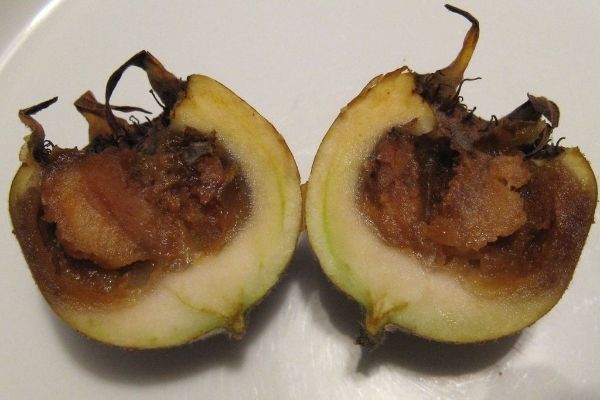Chillicamper
Registered
This morning's wood turning was really enjoyable. I've never turned Medlar wood before, but it turned very nicely and made a beautiful pen. I just managed to keep a small section of the lighter sapwood, which makes a lovely contrast.
Medlar is a fairly rare little tree/shrub. The fruit has been cultivated since Roman times, and is unusual in being available in winter, and in being eaten when bletted (partially rotted).
Indigenous to southeastern Europe, especially the Black Sea coasts of Bulgaria and of modern Turkey. It may have been cultivated for as long as 3000 years.
It requires warm summers and mild winters and prefers sunny, dry locations and slightly acidic soil. It is found across Southern Europe where it is generally rare. It is reported to be naturalized in some woods in Southeast England.
The fruits are hard, acidic, and high in bitter tannins. They become edible after being softened, 'bletted', by frost, or naturally in storage given sufficient time. Once softening begins, the skin rapidly takes on a wrinkled texture and turns dark brown, and the inside reduces to the consistency and flavour reminiscent of apple sauce. This process can confuse those new to medlars, as a softened fruit looks as if it has spoiled. The picture shows a medlar partially ripened. The white flesh is still unripe and too sharp.
I was lucky enough to try some many years ago and loved them, once I got over the look of them. The wood definitely looks better than the fruit!


Medlar is a fairly rare little tree/shrub. The fruit has been cultivated since Roman times, and is unusual in being available in winter, and in being eaten when bletted (partially rotted).
Indigenous to southeastern Europe, especially the Black Sea coasts of Bulgaria and of modern Turkey. It may have been cultivated for as long as 3000 years.
It requires warm summers and mild winters and prefers sunny, dry locations and slightly acidic soil. It is found across Southern Europe where it is generally rare. It is reported to be naturalized in some woods in Southeast England.
The fruits are hard, acidic, and high in bitter tannins. They become edible after being softened, 'bletted', by frost, or naturally in storage given sufficient time. Once softening begins, the skin rapidly takes on a wrinkled texture and turns dark brown, and the inside reduces to the consistency and flavour reminiscent of apple sauce. This process can confuse those new to medlars, as a softened fruit looks as if it has spoiled. The picture shows a medlar partially ripened. The white flesh is still unripe and too sharp.
I was lucky enough to try some many years ago and loved them, once I got over the look of them. The wood definitely looks better than the fruit!




